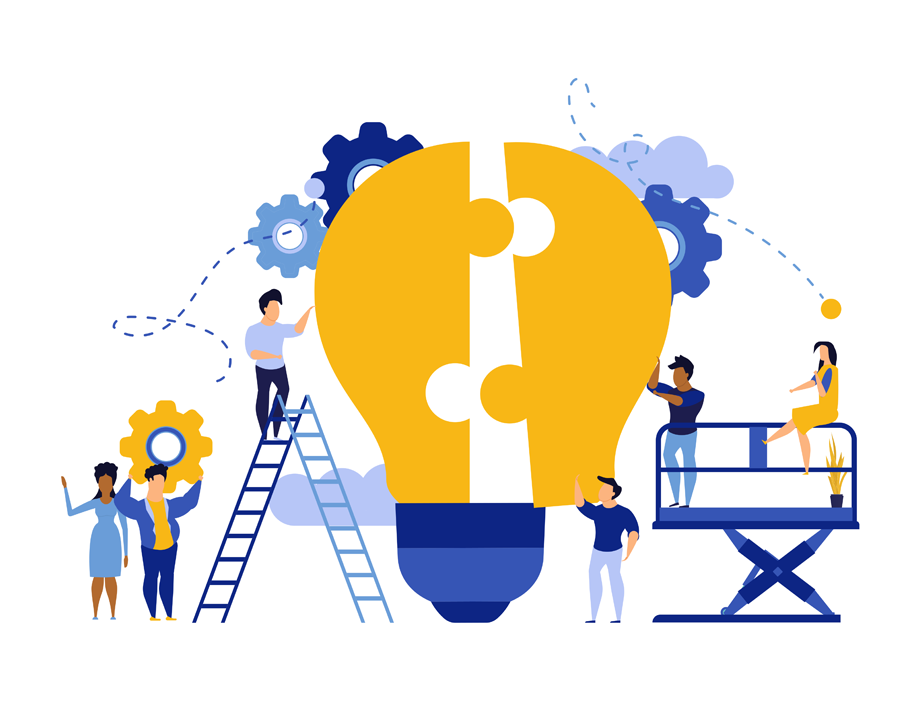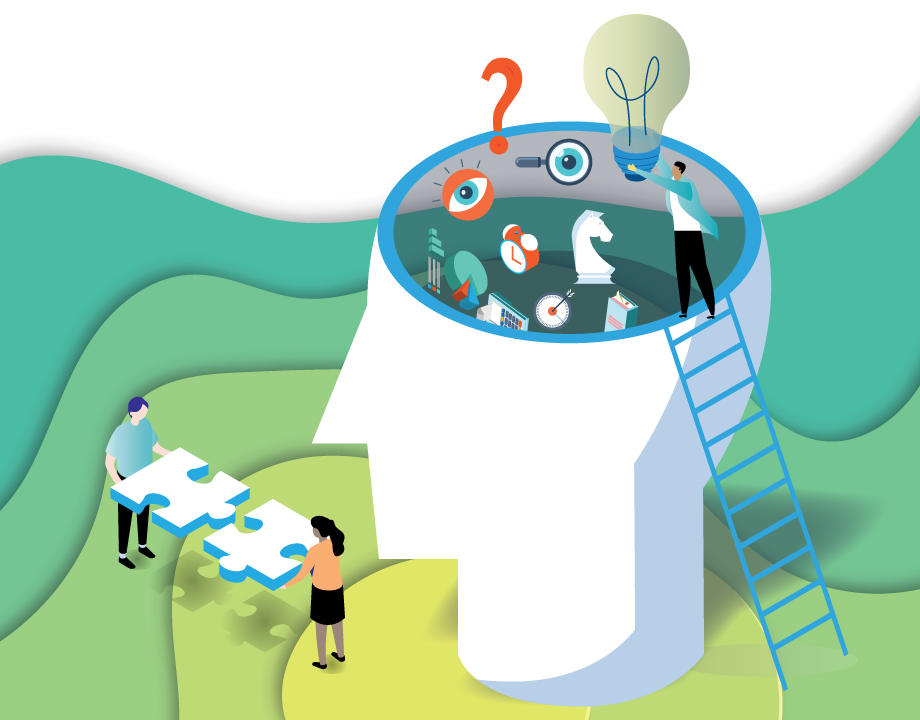Workforce Blog: Women Entrepreneurs Drive Innovation
Workforce Blog: Women Entrepreneurs Drive Innovation


Supporting an often overlooked segment of the entrepreneurial sector makes business sense.
New businesses were formed at a record rate last summer, according to the U.S. Census Bureau. In July 2021, a historic 552,748 formed in a single month, with slightly lower but still extraordinarily high numbers for June and August.
The fact that this occurred during a raging pandemic is no coincidence. Three contributing factors stand out: massive layoffs at the start of the pandemic left millions without jobs; government support programs provided income to fledgling entrepreneurs (including extended unemployment, stimulus checks, and PPP loans); and the widespread adoption of remote technologies not only enabled more people to work from home, but also lowered financial barriers to starting a business.
Why is entrepreneurship important? As engines of economic growth, new businesses are critical to driving innovation, increasing employment, boosting productivity, enhancing sustainability, and certainly creating wealth. And for the growing ranks of entrepreneurial women, starting a business can be a pathway to empowerment.
More Workforce Blogs: Prioritizing Diversity and Inclusion
At HearstLab, I’m fortunate to work with some of the world’s most inspired—and inspiring—women entrepreneurs, visionaries who look to Hearst for capital investment, hands-on support, technical guidance, and mentorship. To qualify for HearstLab participation, a new business must be tech-enabled with a live product or one with demonstrated initial validation; have connectivity to an existing Hearst business; and be focused on enterprise technology, data analytics, financial technology, healthcare, transportation, or media. And the startup must be led by a woman.
HearstLab differs from typical venture capital investors in several respects, but perhaps the most notable (other than our exclusive focus on women entrepreneurs) is the resources we bring to bear. Not only do we enlist subject matter experts from our various business units to consult with our entrepreneurs, but we tap the women leaders across Hearst to serve as leadership mentors. We call this diverse and far-flung cadre HearstLab Scouts, and they are an invaluable source of wisdom, networking, peer-support, and camaraderie.
While HearstLab works to achieve greater gender equity in the tech world, don’t confuse it with corporate philanthropy. Rather, it reflects a business strategy to mine a segment of the entrepreneurial sector that is too often overlooked by traditional investors. Our goal is to help launch thriving, women-led enterprises that return value to Hearst shareholders while bringing visibility and opportunity both to the founders in HearstLab and to our Scouts.
Workforce Blog: Toward a More Diverse Workforce
The popular myth is that entrepreneurism is a young person’s game, but the statistics don’t bear this out. While contemporary culture tends to depict world-changing entrepreneurs in their twenties (think Bill Gates, Steve Jobs, and Mark Zuckerberg), according to Census Bureau data, the average age of business founders in the U.S. is 42.
Most successful entrepreneurs, it turns out, gain a decade or two of experience as employees before they launch their own ventures. According to Harvard Business Review, “Relative to founders with no relevant experience, those with at least three years of prior work experience in the same narrow industry as their startup were 85 percent more likely to launch a highly successful startup.”
Experience, then, is a critical factor in determining entrepreneurial success. That’s one of the reasons why programs like ASME’s ISHOW and Engineering for Change Fellowships can be life-changing, because they open avenues to young entrepreneurs in search of real-world experience. With women representing half of all E4C Fellows and a significant percentage of ISHOW innovators, these initiatives are effective ways for young women engineers to gain valuable hands-on experience that can open doors to an entrepreneurial career path.
Today, roughly one in five businesses with more than one employee are owned by a woman entrepreneur—a percentage that is rising, yet still far below women’s representation in the total population. Our aim is to raise it faster.
Check This Out: Diversity, Equity, and Inclusion at ASME
By nurturing women-led startups, organizations like HearstLab and the ASME Foundation are helping move the technical community toward gender parity. The result is a more inclusive, equitable, and robust innovation culture for all of us.
Lisa Burton O’Toole is vice president of HearstLab, a business unit of Hearst Corporation, a leading global, diversified information, services, and media company with more than 360 businesses. She is a recent recipient of ASME’s prestigious Kate Gleason Award, honoring outstanding women engineers. ASME’s ISHOW and E4C Fellowships are funded through the ASME Foundation. Find out more at www.asmefoundation.org.
The fact that this occurred during a raging pandemic is no coincidence. Three contributing factors stand out: massive layoffs at the start of the pandemic left millions without jobs; government support programs provided income to fledgling entrepreneurs (including extended unemployment, stimulus checks, and PPP loans); and the widespread adoption of remote technologies not only enabled more people to work from home, but also lowered financial barriers to starting a business.
Why is entrepreneurship important? As engines of economic growth, new businesses are critical to driving innovation, increasing employment, boosting productivity, enhancing sustainability, and certainly creating wealth. And for the growing ranks of entrepreneurial women, starting a business can be a pathway to empowerment.
More Workforce Blogs: Prioritizing Diversity and Inclusion
At HearstLab, I’m fortunate to work with some of the world’s most inspired—and inspiring—women entrepreneurs, visionaries who look to Hearst for capital investment, hands-on support, technical guidance, and mentorship. To qualify for HearstLab participation, a new business must be tech-enabled with a live product or one with demonstrated initial validation; have connectivity to an existing Hearst business; and be focused on enterprise technology, data analytics, financial technology, healthcare, transportation, or media. And the startup must be led by a woman.
HearstLab differs from typical venture capital investors in several respects, but perhaps the most notable (other than our exclusive focus on women entrepreneurs) is the resources we bring to bear. Not only do we enlist subject matter experts from our various business units to consult with our entrepreneurs, but we tap the women leaders across Hearst to serve as leadership mentors. We call this diverse and far-flung cadre HearstLab Scouts, and they are an invaluable source of wisdom, networking, peer-support, and camaraderie.
While HearstLab works to achieve greater gender equity in the tech world, don’t confuse it with corporate philanthropy. Rather, it reflects a business strategy to mine a segment of the entrepreneurial sector that is too often overlooked by traditional investors. Our goal is to help launch thriving, women-led enterprises that return value to Hearst shareholders while bringing visibility and opportunity both to the founders in HearstLab and to our Scouts.
Workforce Blog: Toward a More Diverse Workforce
The popular myth is that entrepreneurism is a young person’s game, but the statistics don’t bear this out. While contemporary culture tends to depict world-changing entrepreneurs in their twenties (think Bill Gates, Steve Jobs, and Mark Zuckerberg), according to Census Bureau data, the average age of business founders in the U.S. is 42.
Most successful entrepreneurs, it turns out, gain a decade or two of experience as employees before they launch their own ventures. According to Harvard Business Review, “Relative to founders with no relevant experience, those with at least three years of prior work experience in the same narrow industry as their startup were 85 percent more likely to launch a highly successful startup.”
Experience, then, is a critical factor in determining entrepreneurial success. That’s one of the reasons why programs like ASME’s ISHOW and Engineering for Change Fellowships can be life-changing, because they open avenues to young entrepreneurs in search of real-world experience. With women representing half of all E4C Fellows and a significant percentage of ISHOW innovators, these initiatives are effective ways for young women engineers to gain valuable hands-on experience that can open doors to an entrepreneurial career path.
Today, roughly one in five businesses with more than one employee are owned by a woman entrepreneur—a percentage that is rising, yet still far below women’s representation in the total population. Our aim is to raise it faster.
Check This Out: Diversity, Equity, and Inclusion at ASME
By nurturing women-led startups, organizations like HearstLab and the ASME Foundation are helping move the technical community toward gender parity. The result is a more inclusive, equitable, and robust innovation culture for all of us.
Lisa Burton O’Toole is vice president of HearstLab, a business unit of Hearst Corporation, a leading global, diversified information, services, and media company with more than 360 businesses. She is a recent recipient of ASME’s prestigious Kate Gleason Award, honoring outstanding women engineers. ASME’s ISHOW and E4C Fellowships are funded through the ASME Foundation. Find out more at www.asmefoundation.org.



